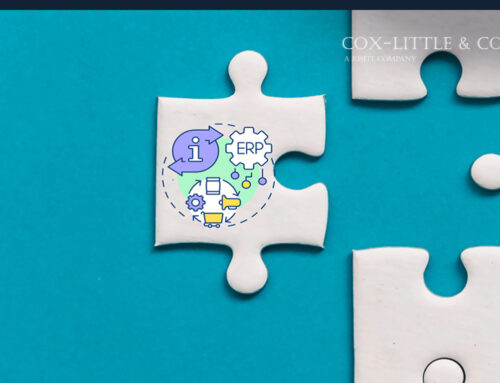
IBM AS400, officially known as IBM iSeries, is an iconic computing system that has remarkably stood the test of time since its inception in 1988. Renowned for its robust architecture, reliability, and security, the AS400 series continues to be a cornerstone in the operations of numerous enterprises worldwide. Despite the rapid advancements in technology, it has stood the test of time and still provides value in critical business operations.
History and Development of AS400
Launch and Vision
The AS400 (Application System/400) was launched by IBM on June 21, 1988. It was designed as a midrange computer for small to medium-sized businesses, offering a multi-user, secure, and versatile environment. The system’s architecture was revolutionary, introducing the IBM Operating System/400 (OS/400), a single-level storage system, and an integrated database that was ahead of its time. The vision was to provide businesses with an all-encompassing system that could handle various applications seamlessly, without the need for extensive IT infrastructure and support.
Evolution Through the Years
Over the years, the AS400 system has undergone significant transformations, adapting to technological advancements while maintaining backward compatibility—a key feature that has aided its popularity. In 2000, it was rebranded as the eServer iSeries, as part of IBM’s strategy to unify its server lines under the eServer brand. Later, in 2006, it was renamed System i. Throughout these changes, the core strengths of the system, including its robust security, reliability, and integrated environment, were preserved and enhanced.
The AS400’s ability to evolve while maintaining its identity is a testament to IBM’s commitment to its foundational principles. This adaptability ensured that the AS400 could meet the changing needs of businesses, from the basic data processing applications of the late 20th century to the complex web-based applications of today. The system’s integrated environment, where hardware and software are designed to work together seamlessly, has been key to its longevity and success.
Key Features of AS400
The AS400 system is distinguished by several key features that have contributed to its longevity and effectiveness in enterprise environments.
Integrated Operating System
The IBM i, previously OS/400, is the lifeblood of the AS400 system, offering an integrated environment that supports both old and new applications. This operating system is designed to simplify complex processes, enabling businesses to focus on innovation rather than maintenance.
Database Management
AS400’s integrated database, DB2 for i, is highly optimized for business data processing, providing exceptional data integrity and security. Its seamless integration with the operating system enhances performance and simplifies data management tasks.
Security Features
The system is renowned for its robust security capabilities, providing comprehensive tools and features to protect against internal and external threats. This includes built-in encryption, auditing, and compliance tools, making it a trusted platform for sensitive data processing.
Scalability and Reliability
AS400’s architecture allows for easy scalability, supporting businesses as they grow. Its reliability is unparalleled, with many systems boasting uptime that exceeds industry standards.
Why AS400 Is Still Popular
Despite the emergence of newer technologies, the AS400 system remains a critical component in many business operations. The reasons for its enduring popularity are multifaceted.
Legacy Applications and Business Processes
Many businesses continue to rely on legacy applications that were originally developed for the AS400 platform. The cost and complexity of migrating these applications to a new system can be prohibitive, making it more viable to maintain the existing AS400 infrastructure.
Industry Trust and Dependence
The AS400 has built a reputation for reliability and security over the decades. Industries that require robust data processing and storage solutions, such as finance and healthcare, continue to depend on this system for their critical operations.
Compatibility and Integration Capabilities
One of the system’s greatest strengths is its backward compatibility and ability to integrate with modern technologies. This ensures that businesses can continue to use their AS400 systems while adopting new technologies and platforms.
AS400 in Modern Computing
Versatility and Evolution
The AS400 system, now more commonly referred to as IBM iSeries or IBM System i, has undergone significant changes since its introduction in 1988. Originally designed for small to medium-sized businesses, its adaptability has allowed it to serve a wide array of industries, including banking, manufacturing, logistics, and insurance. This adaptability is largely due to its upward compatibility, ensuring that applications developed on earlier AS400 systems can still run on the latest IBM Power Systems servers with minimal modifications. This unique feature has contributed to its sustained relevance in modern computing.
Integration and Modernization Capabilities
AS400’s integration capabilities are vast, supporting a myriad of internal and external systems. It seamlessly interacts with various databases (Oracle, SQL Server, Db2, MySQL), ERP systems (SAP, Oracle E-Business Suite), CRM systems (Salesforce, Microsoft Dynamics CRM), and SCM systems, among others. Moreover, AS400 is compatible with major cloud platforms like AWS, Microsoft Azure, and Google Cloud Platform, facilitating its use in modern cloud-based architectures. Its ability to integrate with mobile devices and social media platforms enhances its utility in today’s digital environment
Cloud Adoption and AS400
The adaptation of AS400 to cloud computing represents a significant shift, offering flexible, cost-effective solutions for businesses. The AS400 cloud enables organizations to benefit from the system’s robust features while leveraging the scalability and efficiency of cloud computing. This hybrid approach suits various industry needs, from manufacturing requiring low-latency hybrid cloud solutions to retailers preferring scalable cloud-only systems.
Future of AS400 and Legacy Systems
Continued Dependence and Evolution
Despite perceptions of being outdated, the AS400 system continues to evolve, integrating modern features and technology with each hardware and software update. Its processing power and capabilities have significantly expanded, demonstrating IBM’s commitment to modernizing the platform. This evolution ensures AS400 remains a viable solution for enterprises, especially those in sectors like finance and manufacturing, where its reliability and performance are unmatched.
Challenges and Opportunities
The future of AS400 and similar legacy systems will involve addressing challenges related to knowledge transfer and system maintenance. As the original developers and operators of these systems approach retirement, ensuring the continuation of expertise is critical. This has led to an emphasis on succession planning and knowledge sharing to maintain and operate these specialized platforms effectively. Furthermore, the growing demand for cloud-based solutions presents both a challenge and an opportunity for AS400, as businesses look to leverage the benefits of cloud computing without sacrificing the reliability and robustness of AS400.
Hiring for AS400 Roles: A Specialized Market
The hiring landscape for AS400 roles is unique. Organizations often look for candidates with a blend of traditional skills related to AS400 operations and modern competencies such as integration with cloud services and contemporary programming languages. The rarity of these combined skill sets can make hiring challenging but also underscores the value of experienced AS400 professionals.
Identifying the Right Skills
When staffing for AS400 positions, employers prioritize a deep understanding of the IBM i operating system and proficiency in RPG, COBOL, and SQL. Knowledge of modern languages like Java and PHP, which can run on the IBM i platform, is increasingly important as businesses seek to integrate legacy systems with new applications and cloud-based ERP services. Additionally, experience with database management, particularly DB2, and familiarity with the system’s unique security model are essential.
Sourcing AS400 Candidates
Finding candidates with the right mix of skills requires a targeted approach. Job boards dedicated to IT and enterprise computing roles, professional networks like LinkedIn, and forums specific to IBM i professionals are valuable resources. Engaging with community events and conferences can also connect employers with potential candidates. For roles requiring niche skills, partnering with specialized ERP recruitment agencies that understand the AS400 ecosystem can be particularly effective.
Evaluating AS400 Candidates
Assessing candidates for AS400 roles goes beyond verifying technical competencies. Given the platform’s extensive history and the critical nature of the applications it supports, candidates must also demonstrate problem-solving abilities, a capacity for critical thinking, and a willingness to engage in continuous learning. Real-world scenarios or challenges during the interview process can help evaluate these qualities.
Retention and Training
Retaining AS400 talent is as critical as hiring. Given the specialized nature of the platform, offering continuous training opportunities and pathways for career advancement is essential. Encouraging participation in IBM i community events and online forums can also support professional growth and engagement. Additionally, recognizing the unique contributions of AS400 professionals to the organization’s IT strategy can enhance job satisfaction and loyalty.
The Future of AS400 Talent
As the AS400/iSeries platform continues to evolve, so will the skills required to support it. Organizations need to adapt their hiring strategies to reflect changes in the technology landscape, including the increasing shift towards cloud computing and the integration of AI and machine learning capabilities. Investing in training for current employees to learn modern technologies and approaches will be vital for businesses that rely on the IBM i platform.
Conclusion
In conclusion, the IBM AS400 system, through its various iterations, remains a cornerstone of enterprise computing, offering unparalleled reliability, security, and flexibility. Its integration capabilities and adaptability to modern cloud architectures underscore its enduring value. As we look to the future, the evolution of AS400 will focus on enhancing its integration with modern technologies and ensuring the transfer of knowledge to a new generation of IT professionals. Despite challenges, the system’s foundational strengths position it well to continue serving critical business needs in the decades to come.







Leave A Comment